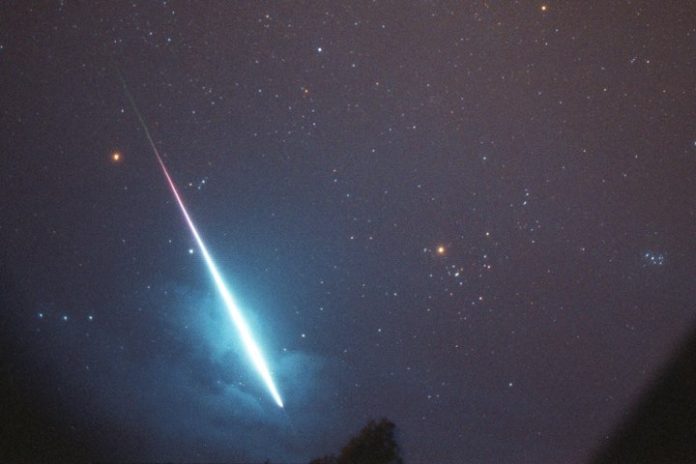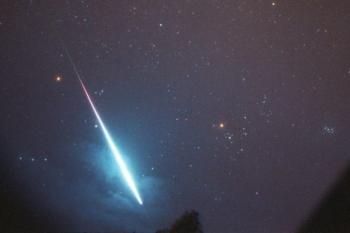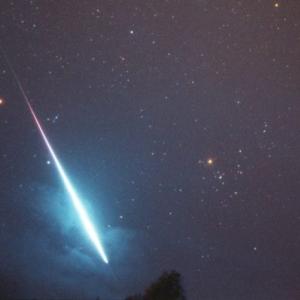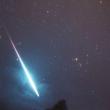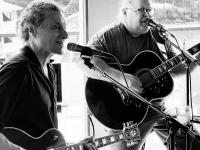Perseid meteor shower coming to a backyard near you
Although the stars in late summer are fairly ho-hum as stars go, August usually provides a good show anyway, because one of the most reliable meteor showers can be seen every August, the planets are in a pretty easy place to spot – not too close to the horizon – and this year, there will be a solar eclipse to boot. Who could ask for anything more?
The Perseid meteor shower is so named because the meteors, also known as “falling stars,” appear to come from the constellation Perseus. Perseus is located close to the zenith of the sky, not far from the constellations Cassiopeia, Pegasus and Andromeda, which form part of the Perseus myth. Meteors are not really falling stars, nor do they have anything to do with stars. They are bits of space dust and rocky debris left in space as the comet Swift-Tuttle swings around the sun, melting its outer ice and forming a dusty, rocky tail, every 133 years or so.
When the Earth’s atmosphere comes into contact with the dust and rock particles, as it does in mid-August every year, the particles burn up, and we see that as a meteor shower. The most recent visitation of the Swift-Tuttle was in 1992, so there is still plenty of dust in the region. The Perseids are also well known for their “fireballs” – larger rock particles that seem to streak across the sky in a multitude of colors.
On any clear night, it is possible to see some meteors if one is patient enough. But during the Perseid meteor shower, it is possible to see 60-100 per hour at the peak, which is going to be between Aug. 12 and 13. Unfortunately, there will be a third quarter moon those nights, which may wash out some of the fainter meteors from view. The Perseids are also a good meteor shower to view because the weather tends to be reasonably warm, and the shower takes place over a long period, so you can spot meteors in the early evening instead of midnight or later.
The only equipment you need for a meteor shower is a can of bug repellent, a thermos of your favorite hot beverage, a comfortable chair or blanket, and a reasonably dark area. A telescope or binoculars will not be of much use in a meteor shower; the meteors streak across the sky too quickly to track them with a telescope.
The Central Maine Astronomical Society holds evening events known as star parties in three locations, Whitefield, Lincolnville, and Damariscotta, according to Society President Jon Silverman. The Damariscotta River Association is the closest site to Wiscasset and Boothbay Harbor. This month, the DRA star party will take place on Aug. 19, which coincides with the Saturday closest to the new moon. “The star parties are free and open to the public,” Silverman said. “Bring your telescope if you have one, or use one of ours.” He said the sky is dark enough to do good astronomy, despite some light pollution from businesses. The star party runs from 8 p.m. until about midnight, but people come and go. “We also have ‘flash mob’ star parties if the weather’s clear,” he said. “If you get on the mailing list, you hear about them.”
Due to the interference of the moon, the group doesn’t have an event scheduled for the Perseids, but Silverman said one of the flash mob parties might arise if the weather is good.
To get on the group’s email list, go to www.maineastro.com
In addition to the Perseids, a solar eclipse will take place on Aug. 21. The Boothbay Harbor Memorial Library has been getting kids ready to watch the eclipse safely. All children who signed up for summer reading programs will receive eclipse-viewing glasses, and there will be a class on building a binocular viewing station on Saturday, Aug. 12 at noon. The binoculars or a telescope can be used to project an image of the sun in eclipse. On Saturday, Aug. 19, from noon to 1 p.m., children will learn how to make a pinhole viewer.
The eclipse in Maine will be about 60 percent of total. The start of the eclipse will occur around 1:30 p.m., with the maximum at 2:45 p.m., and the end around 3:55 p.m.
Event Date
Address
United States

